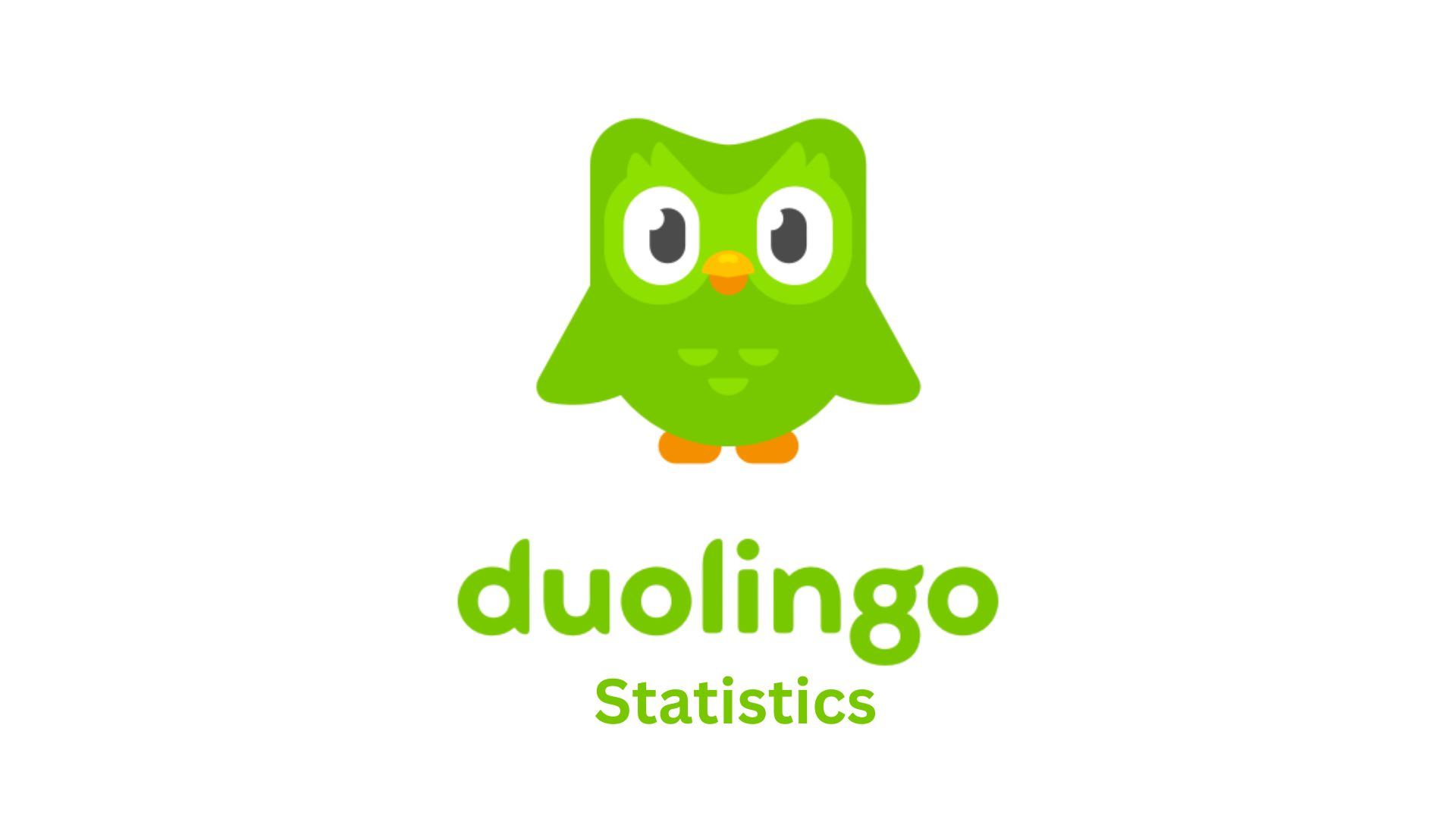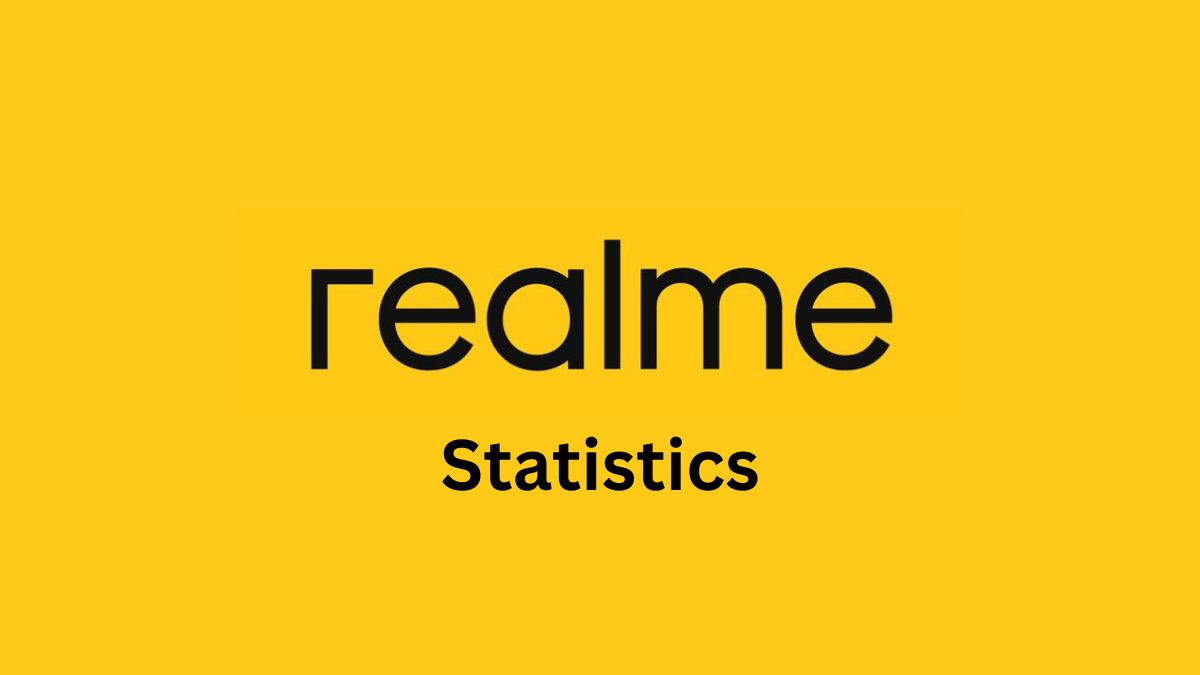Small Business Cyber Attack Statistics And Facts (2025)
Updated · Nov 21, 2025
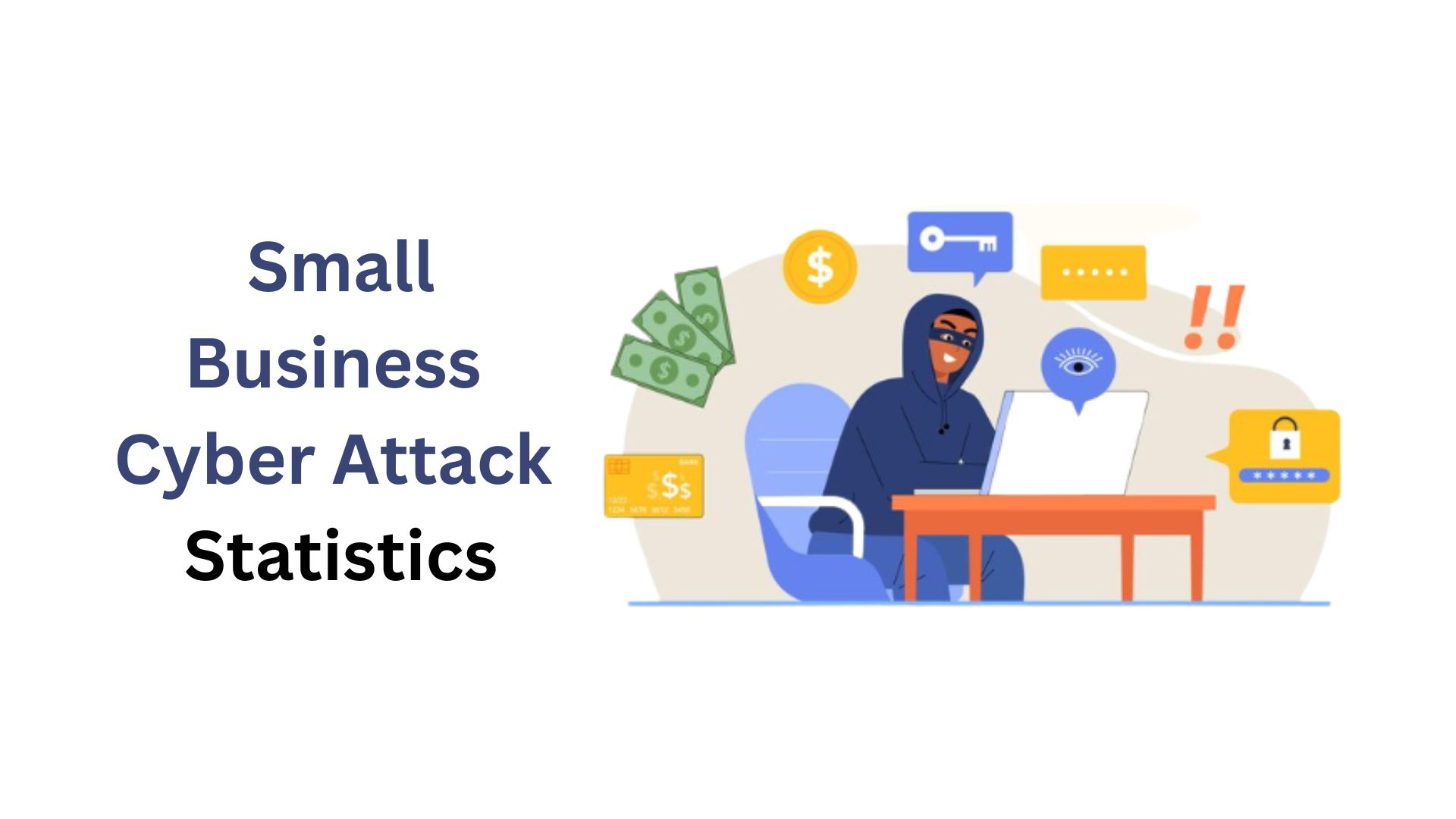
Table of Contents
- Introduction
- Editor’s Choice
- General Statistics
- Small Businesses Are Prime Targets
- Cost of Cyber Attacks
- Types of Cyber Attacks Targeting Small Businesses
- Lack of Awareness And Preparedness
- Most Frequent Cyber Attacks And Their Consequences On Small Businesses
- Small Business Cyber Attack Prevention Tools
- Conclusion
Introduction
Small Business Cyber Attack Statistics: Cyber threats remain a significant security concern for small businesses in 2024. They make good targets for cybercriminals because they have limited resources and, many times, inadequate security measures of their own. The knowledge of the current cyber threats is printed on the mind of any small business owner so that a strategy can be fabricated to protect against them.
This article will present the statistics and trends of small business cyberattacks.
Editor’s Choice
- Three out of four small businesses have had at least one cybersecurity incident in the past year.
- One in four has seen a deepfake scam with AI-generated voices or videos.
- 63% of employees reuse their passwords, while only 47% of businesses have an incident response plan.
- 18% of companies use web vulnerability scanning tools; 10% use encryption; 10% use network security monitoring tools.
- A data breach costs around US$120,000 to mitigate; US$35,000 is the average cost of ransomware; US$70,000 is the average cost of phishing.
- Half of small business owners do not consider themselves targets of cyberattacks.
- Twenty % regularly evaluate their systems for vulnerabilities.
- Ransomware operators received about US$2 million in ransom payments in 2025, an increase from US$400,000 raised in 2023.
- Fewer than 25% regularly conduct cybersecurity training; 58% of employees cannot recognise phishing emails.
- Some 16% lose future business and suffer permanent data loss; 14% have to level up legal fees or pay regulatory fines. 13% are faced with lawsuits or damage to their reputation.
- By 2025, cybercrime will hit the global economy with a cost of US$10.5 trillion.
- 29% of the businesses that are affected by data breaches tend to lose their customers permanently.
- 60% of small businesses shut down within six months of a cyberattack occurring.
- Direct financial loss is there for 42%, and approximately 40% lose some form of business-critical data.
- These include only 8% who use managed detection services and 8% who use wireless network defence tools.
- 51% experience website downtime of 8-24 hours, while 50% take more than 24 hours to complete recovery for full functionality.
- For 43% of all cyberattacks in 2025, it will be the small businesses that are in the hot zone, as defences were down due to weak security.
- Up to 30% of data breaches are caused by stolen credentials; 45% of small businesses don’t use any endpoint protection.
- 33% of BEC attacks target small businesses, with an average cost of US$50,000 per incident.
- 30% report system downtime after attacks; 28% report lost revenue; 32% lose customer trust.
General Statistics
- As reported by Packetlabs, small business cyber attack statistics state that small businesses have become a growing target of cyberattacks, accounting for 43% of all attacks. The pandemic created an even bigger stage for this problem, as cybercrime surged 600% during this period.
- Tragically, 60% of small businesses that are cyberattacked close within six months. This really shows how damaging a cyberattack is to the entity.
- Data loss is also a prominent downside of a cyberattack, with almost 40% of small businesses having reported losing crucial information.
- Ransomware continues to rank aggressively amongst the dominant threats, with 82% of ransomware attacks aimed at small firms, and 85% of all ransomware attacks are against SMBs.
- The average cost of a ransomware attack stands at US$26,000, whereas in the past year alone, U.S.-based small businesses paid more than US$16,000 per business in ransom.
- The number of businesses affected by ransomware increased by more than 27% in the previous year, with 37% of victims having fewer than 100 employees.
- Back in 2016–2017, around 5% of SMBs declared that they had fallen victim to ransomware, with manufacturing being the most targeted industry.
- Malware-containing emails still pose issues, getting past almost 1 in every 323 emails that small-to-mid-scale companies receive.
- Financially, breaches indeed register a high loss value of US$3.31 million for the average small business with fewer than 500 employees. Of these crimes, 95% are human errors, highlighting the prime importance of training employees.
- Half (50%) of companies require more than 24 hours to recover, while 43% still have no formal recovery plan for cybersecurity incidents.
- Small and medium-sized companies allocate 5% to 20% of their IT budgets to security, yet 95% of the cost of cybersecurity incidents could span from US$826 to US$653,587, depending on the scale of the attack and the specific preparedness of the business.
Small Businesses Are Prime Targets
- Cybercriminals increasingly concentrate on attacking small businesses. In 2025, 43% of cyberattacks occurred against small businesses. Many of these companies have weak cybersecurity defences and are comparatively easy to breach.
- The repercussions of such attacks are grave. 60% of small enterprises fold down within six months after being attacked. In many cases, this is because they are not capable in terms of funds, staff, or systems to patch up.
- These attacks are swift and frequent, occurring every 11 seconds to one small business. This high risk notwithstanding, 80% of small businesses still do not have formal cybersecurity policies under which they are governed, and in a way, this creates an extra vulnerability.
- Also, 75% of small businesses have been successfully attacked at least once in the past year, primarily because of the greater use of digital tools and online platforms.
- 30% of data breaches result from the attack of stolen credentials like usernames and passwords; malicious entities take over systems owing to incorrect and weak password usage.
- Worse is the fact that 45% of small businesses do not deploy endpoint protection to secure company devices, often leaving laptops and smartphones open to intrusion.
- Only 20% of small businesses provide regular assessments of their systems for weaknesses. Without such sessions, unattended vulnerabilities get manifested into attacks when it is too late.
Cost of Cyber Attacks
- An underground threat brings about severe financial consequences for small businesses. The average data breach of 2025-levels US$120,000 in territory, considering loss of sales, legal expenses, and fixing damaged systems.
- Ransomware attacks lock business systems, demanding ransom from small businesses, costing up to US$35,000, with many paying just to be operational again.
- Phishing, through deceptive emails, can go on to undermine customer confidence with an average cost of US$70,000 per incident.
- Global-scale cybercrime can hit US$10.5 trillion per year by 2025, with small businesses forming the maximum number of victims.
- Reputation gashes also-29% of businesses will lose clientele after data breaches, as customers begin to distrust them.
- With increasing risks, cyber insurance premiums have risen by 40% in the last two years. It is important to place a protective shield around your business..
- In the most shocking fact, 70% of small business owners reported that the recovery process from a cyberattack is harder than that from a natural disaster, just to state how devastating these events can be.
Types of Cyber Attacks Targeting Small Businesses
- Phishing remains the most common cyber threat. At least 3.4 billion phishing emails are presumably sent every day globally, with many being aimed at small businesses.
- In 2025, ransomware attacks increased by 20%, and attackers now want small businesses to pay quickly, lest they lose time and their critical data.
- Each year, 20% of small businesses fall victim to Distributed Denial of Service (DDoS) attacks, which attempt to overload and shut down the business’s website or service.
- Email is the biggest spreading vector of malware-90, 92% of malware infections happen through email. One wrong click can wreak havoc.
- About 33 % of BEC attacks target small companies as targets, and the average is US$50,000 per attack.
- Credential stuffing-hackers trying to work with previously stolen usernames and passwords-hit 40% of small businesses.
- Cutting off threats comes from deepfakes. Over a quarter of businesses fall victim to scams that use AI-generated fake voices or videos of executives or vendors.
Lack of Awareness And Preparedness
- A big reason small businesses are at risk is that 50% of owners don’t believe they are targets. Having this false belief creates the absence of urgency in tackling cybersecurity.
- Another training issue arises. Less than 25 % of small businesses consistently train their workers in best cybersecurity practices. Without such training, Mistakes are much more likely.
- 58% of employees at small companies cannot identify a phishing email, meaning so much to teach.
- Reuse of passwords is a huge problem-63% of employees use the same passwords across many accounts, which makes it easy for a hacker to gain access to an account.
- Only 47% of small businesses have an incident response plan, and without a pla,n responding to an attack takes longer and costs more.
- Secondly, 35% of small businesses refuse to back up their data regularly, which makes recovery from ransomware or other attacks much harder to accomplish.
- But despite these risks, only 18% of small businesses are insured for cybersecurity risks, thereby exposing the majority should an attack occur.
Most Frequent Cyber Attacks And Their Consequences On Small Businesses
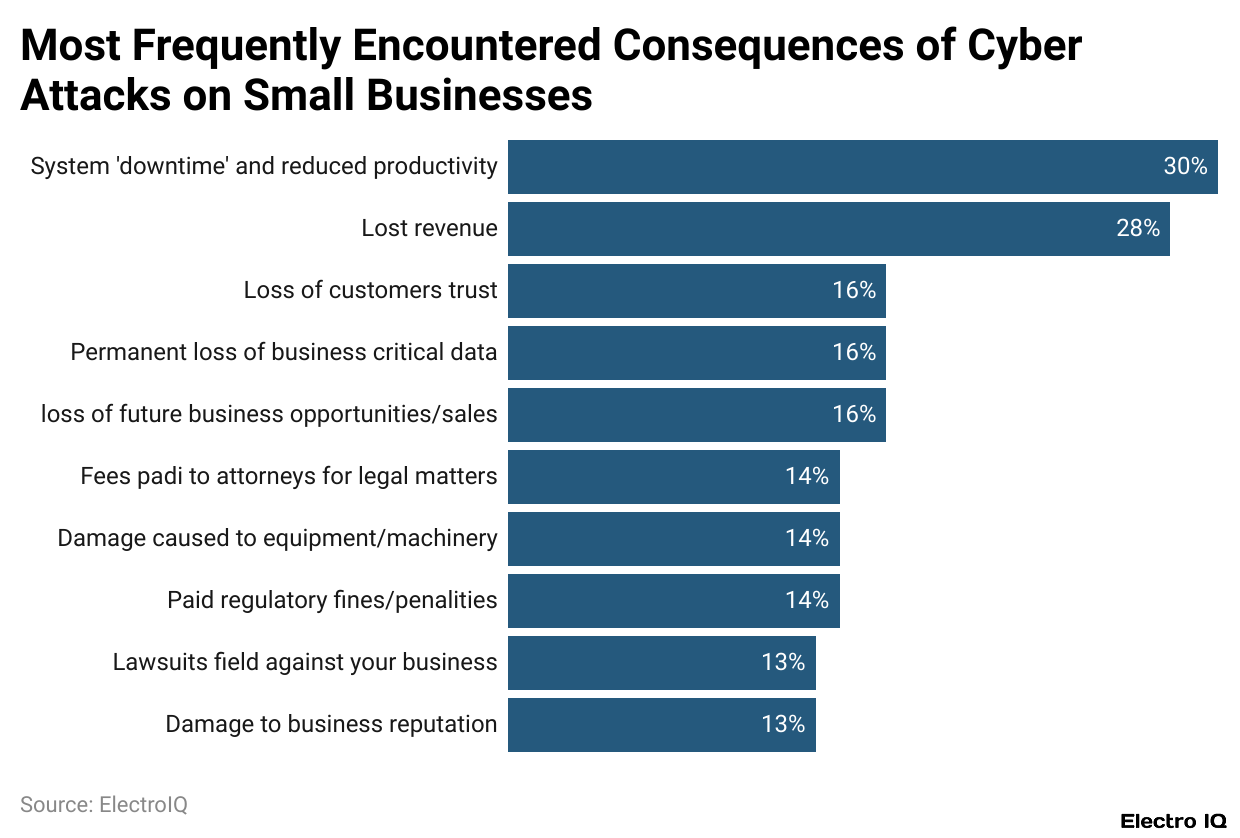
(Reference: businessdasher.com)
- Small businesses face far-reaching and sometimes destructive consequences as a result of cybercrime.
- One of the first major knocks is system downtime and reduction in productivity, impacting 30% of small businesses.
- No sooner do the systems go offline, and operations halt, while the staff find themselves unable to perform some essential tasks.
- 32% of small businesses also report a loss of income following an attack. Then, a very serious loss is the erosion of customer trust felt by 32% of businesses.
- Customers expect protection for their personal and financial data, and when that is compromised, many no longer trust the company to do business with.
- This long-term damage could include the loss of future business opportunities and sales that are faced by 16% of small businesses after the attack. The destruction goes far beyond trust and productivity.
- About 16% of small businesses suffer from a permanent loss of vital business data, which can surely cripple their operations with compliance-as-well-as-long-term prosecutions.
- 14% of small businesses are paying for attorney fees to clean up the legal mess, and another 14% face regulatory fines or other penalties for being out of step with data protection laws.
- In 13% of cases, companies are sued, either by disgruntled customers, partners, or employees.
- 14% of small businesses reporting physical damage to equipment or machinery as a result of malicious programs said that the damage included corrupted software, forced shutdowns, or hardware failures.
- From the ransom standpoint, 2025 has been one of the most financially compromising years on record for small businesses, where much has been made of the sharp rise in ransom demands.
- With ransom payouts averaging US$2 million, compared to US$400,000 in 2023, such a ransom demand can wipe out years of profits and put even a fairly established small business in the red.
- 51% of small businesses report that their websites remain down for 8 to 24 hours after the attack, while 50% take at least 24 hours to recover full system functionality. This lengthy downtime affects sales, customer service, and internal operations.
- The long-term outlook for many small businesses post-cyberattack is grim, with about 60% shutting down permanently within this period in six months, unable to recover financially, reputationally, or operationally.
- Another 42% of the attacks cause direct financial losses, and close to 40% lose business-critical data, which is often irreplaceable.
Small Business Cyber Attack Prevention Tools
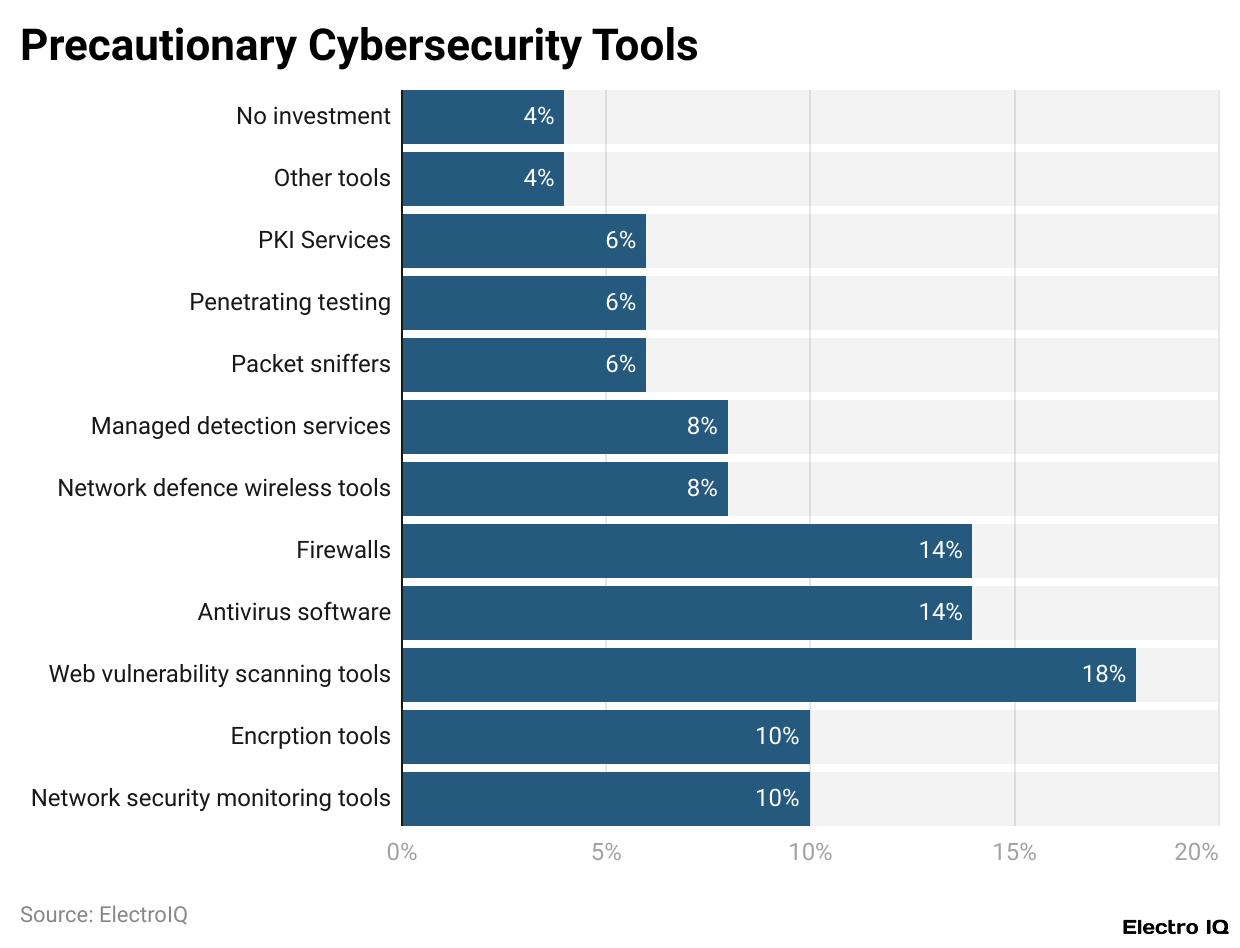
(Reference: zinnov.com)
- As per Zinnov, Small business cyber attack statistics show that the above data is indicative of how small and medium-sized businesses (SMBs) are investing differently in cybersecurity tools in efforts to put a defence against cyber threats.
- The cover distribution is reflective of strength and, at least, glaring gaps in protection. Shockingly, 4% of the businesses have not invest in any cybersecurity tool, leaving them extremely vulnerable to attacks.
- An additional 4% use unspecified or miscellaneous tools, which either suggests a lack of strategy or the absence of standardised protection.
- Some businesses have opted for more specialised tools instead. On the other end of the spectrum come some advanced monitoring tools, with 8% of SMBs armed with managed detection services, where cybersecurity experts undertake the detection and response to cybersecurity threats.
- Also, another 8% of the respondents report the use of wireless network defence tools meant to protect Wi-Fi networks from unauthorised access or interference. They seem to favour basic but vital security tools.
- 14% had firewalls, which act as a barrier between the internal systems and external threats, whereas 14% had antivirus, a tool used to detect and remove malware and considered essential for any business.
- However, these days, more proactive cybersecurity approaches are quite popular with SMBs: 18% utilise web vulnerability scanning tools to examine their websites regularly for any exploitable weaknesses.
- Encryption tools, utilised by 10%, protect sensitive data in transit or at rest. Meanwhile, another 10% use network security monitoring tools that monitor network activities continuously to detect threats on time.
Conclusion
Small Business Cyber Attack Statistics: The cybersecurity landscape for small businesses in 2024. Since many attacks target small businesses and the costs attached to such breaches are very high, these enterprises must invest heavily in cybersecurity measures.
Comprehensive security systems and measures, proper training of all staff, responding effectively once an incident strikes, and cyber insurance considerations all work together to significantly reduce risk and increase resilience to cyber threats.
FAQ.
Small businesses are a favourite target since they are often without adequate cyber defences in place. In the year 2025, 43% of all cyberattacks were targeted at small firms, largely because of their weak defences, such as ill practices of password management, lack of endpoint protection, or lack of formal policies on cybersecurity. Also, many business owners simply do not consider it a big threat, which only makes it easy prey.
Phishing is number one, with 3.4 billion phishing emails being sent out per day. Other major threats include ransomware (up 20% in 2025), BEC, DDoS attacks, credential stuffing, and the newest threats like AI-assisted deepfake scams through voices or videos.
The average cost of a data breach stands at US$120,000. Ransomware attacks cost around US$35,000 per incident, phishing attacks loom at US$70,000 on average, while BEC attacks average about US$50,000. This is compared with a sharp increase in ransom demand, which between 2023 and 2025, climbed from US$400,000 to US$2 million, exhibiting the growing profile of the financial threat.
Cyberattacks cause 30% system downtime, 28% lost revenue, and 32% lost customer trust. Other long-term effects include 16% permanent data loss, 13% to 14% lawsuits or legal fees, and 13% reputational damages. Alarming reports have it that 60% of small businesses shutter within six months of an attack.
Tools that might be configured include firewalls (14%), antivirus (14%), web vulnerability scanners (18%), encryption (10%), and network-monitoring tools (10%). Yet only 47% have an incident response plan, and less than 25% conduct staff security training regularly, therefore emphasising the need for better cybersecurity education and proactive security policies.

Joseph D'Souza founded ElectroIQ in 2010 as a personal project to share his insights and experiences with tech gadgets. Over time, it has grown into a well-regarded tech blog, known for its in-depth technology trends, smartphone reviews and app-related statistics.



